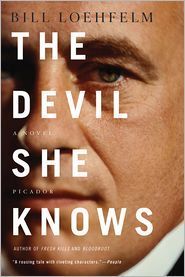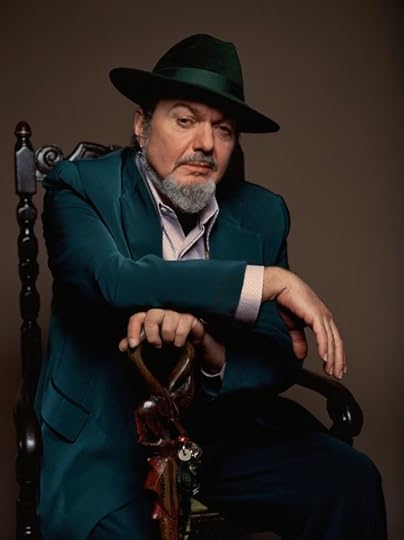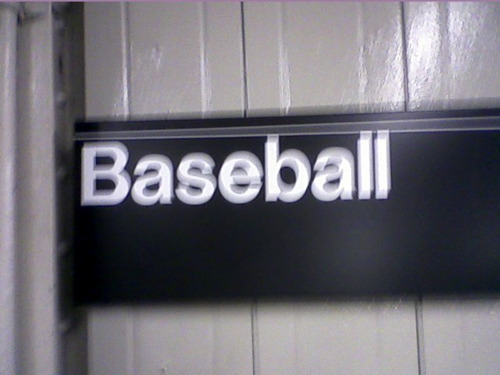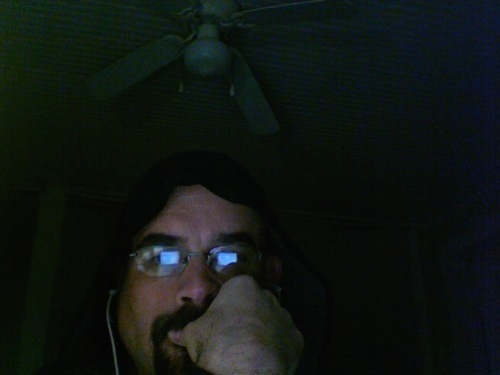Bill Loehfelm's Blog, page 62
April 11, 2012
"Tight and tough prose framing a world of sudden violence, constant moral compromise and losing..."
-
How Batman, Keith Richards and Jay Gatsby changed my life:
http://crimespreemag.com/blog/2012/04/5-books-albums-that-changed-my-life-bill-loehfelm.html
April 10, 2012
Love, love love this song, the title track from the album of the...
Love, love love this song, the title track from the album of the same name.
The just-released video for former fwriction : review contributor Kelcy Mae's wonderful song, "Pennies in Hand."
She writes gorgeous poetry, and she plays brilliant music. Grab both now.
April 6, 2012
“A taut, knowing story … Maureen Coughlin is a hero for...

“A taut, knowing story … Maureen Coughlin is a hero for the ages, a character who jumps off the page and demands the reader’s full attention.” — Laura Lippman, author of The Most Dangerous Thing
THE DEVIL SHE KNOWS out as a Picador paperback on June 5. Pre-order wherever books are sold.
"A taut, knowing story … Maureen Coughlin is a hero for...

"A taut, knowing story … Maureen Coughlin is a hero for the ages, a character who jumps off the page and demands the reader's full attention." — Laura Lippman, author of The Most Dangerous Thing
THE DEVIL SHE KNOWS out as a Picador paperback on June 5. Pre-order wherever books are sold.
theavc:
This is the second coolest image we’ve run on the site...

This is the second coolest image we’ve run on the site today. And the things Dr. John says in the interview are even cooler. Photo by Lisa Houlgrave.
theavc:
This is the second coolest image we've run on the site...

This is the second coolest image we've run on the site today. And the things Dr. John says in the interview are even cooler. Photo by Lisa Houlgrave.
March 29, 2012
Born This Way: My Life as a Mets Fan, Part II
Another in the series of essays honoring the 50th anniversary of the New York Mets:

I often get asked, when people find out that I'm from New York, if I'm a Yankee fan.
"No," I answer, "I'm a Mets fan. There are two teams in New York, you know."
Then comes the follow-up question: "Why?"
Some even phrase it "How?" as in "How did you become a Mets fan?" It's often asked with same intonation and inflection as "How did you get that weird growth right in the middle of your forehead?" (From banging my head on the wall as a Mets fan). "How do you do it?" they wonder. "How do you choose?"
And of course they wonder, "Why the Mets, for the love of God? Why the team with two titles instead of the team that's on the cusp of thirty championships, the most successful sports franchise in the world?"
Of course, these questions rely on a certain flawed assumption, that I had a choice. I didn't. I was born this way. I was born a Mets fan. The same way I was born a male, born with brown eyes and a German last name into a predominantly Irish family. I was born into a Mets family. I see in my nieces and nephews the same indoctrination into the faith that I must've gone through as a child. I wasn't asked which team I loved anymore than I was asked how I felt about gravity. I'm not conscious of making a choice. I wasn't aware that was another option.
The ultimate responsibility lies, I'm told, with my grandfathers: Loehfelm on one side, Murphy on the other, Brooklyn Dodger fans both. There is a direct throughline from the Brooklyn Dodgers to the Mets. Most Mets fans are descended from Dodger fans. On a recent edition of THE DAILY SHOW, a guest asked John Stewart if he rooted for the the Yankees or the the Mets. His response: "My grandfather was a Brooklyn Dodgers fan, so Mets all the way."
The Mets came into the league in 1962, a single team to replace not only the beloved Dem Bums of Brooklyn, but also the New York Giants, who had departed on the heels of the Dodgers for the foggy hills of San Francisco. As a tribute to their forefathers, the Mets took one color from each team as their own: blue from Brooklyn and orange from the Giants. When the Mets replaced Shea Stadium with Citi Field, the new place was consciously designed to recall Ebbet's Field, the old Flatbush home of the Dodgers. Ebbet's was demolished in 1960, several years after the Dodgers left for LA and more parking spaces after the 1957 season. The site of the old stadium is now home to the Jackie Robinson apartments.
Dodger fans in particular, because they had in the Forties and Fifties suffered so brutally and so often at the hands of the Yankees, especially in the World Series, had found it simply inconceivable to shift their loyalties to what was for seven years, the only game in town if the game was baseball. A transfer of loyalty to California was out of the question as well. Grandpa Murphy (probably like a lot of Grandpa Murphy's in New York) hated the LA Dodgers until the day he died. I'm not a fan of theirs, either. Family tradition.
March 23, 2012
March 22, 2012
My First Time, Two of Them.
The Tennessee Williams Literary Festival hits New Orleans this weekend. Here's a little something I did about my first appearance there as a published novelist.
January of 2005, I sat backstage at Tipitina's, trying not to throw up. My band was about to play Tip's for the first time. With ten minutes remaining before show time, the romantic thrill of playing drums in such a storied New Orleans venue had all but evaporated. I stared at the photos on the surrounding walls. The Neville Brothers, the Meters, Stevie Ray Vaughn, Dr. John, Professor Longhair himself, they had all played on the stage I was about to take. I was a long way from the soulless strip malls of Staten Island, on the edge of one of the funkiest stages in the world's funkiest city. I struggled to believe I belonged out there. Did I really have the chops to play Tip's? Was I really a New Orleans musician? It was a true David Byrne moment: "How did I get here?"
Now, we weren't opening for Galactic or the Dirty Dozen. We had a good-sized crowd but hardly SRO. Joe "Cool" Davis introduced us, but he mispronounced the name of the band. We got an hour to do our thing. When we finished, our set hadn't set a new benchmark in the annals of New Orleans music. But it was Tipitina's. I broke a sweat under the same low-hanging lights as Mean Willie Green, Russell Batiste, and Zigaboo. I held my own. Listening back to the soundboard mix the next day, I heard the tension in the first song or two, but I heard some swing, some funk from the kit. I didn't exactly throw down, but I didn't throw up. And, most importantly, I'd earned my way onto a stage that I had longed to play.
On a Friday afternoon in March of 2009, I experienced similar sensations at the Tennessee Williams New Orleans Literary Festival.
[[MORE]]
While I have loved the drums since I was a kid, my real artistic aspirations have always been literary. I've never wanted to be a professional musician, but I've wanted to be a novelist as long as I can remember. That happened in August 2008 when Putnam published Fresh Kills, my first novel. A bigger moment than I'll ever have onstage, that publication landed me a spot on the festival's First Novelists panel. An author cancellation put me on another Friday panel, this one including Laura Lippman. In drumming terms, it was the equivalent of being asked to talk rhythm with Neil Peart. I had the David Byrne moment all over again.
At literary festivals, there is no backstage. The afternoon of my back-to-back panels I loitered, nervous and overdressed, outside the Bourbon Orleans ballroom and signed copies of my novel for the bookseller's table. I thought of the times I'd attended this very festival as a writer looking for a break, listening enviously to the authors, craving not their seat but the accomplishments that had put them there. And then there I was, finally one of the speakers, and I was practically wrecked at the prospect of sitting at that table. A part of me wanted to just go home and smoke cigarettes on my porch. But I stayed, sucking down ice water and wondering what kind of writers' conference didn't have coffee urns in every corner of every room. I waited, mostly, to take that step out of the crowd and onto the stage.
There on the bookseller's table, across the covers of their books, ran the names I was suddenly among: Amanda Boyden, Nevada Barr, Tim Gautreaux, Laura Lippman, Richard Ford. I hadn't written a dozen bestsellers like Barr or Lippman. I hadn't won the Pulitzer like Richard Ford. But like that night at Tip's, I had a moment of appreciation for how far I'd come, even if I had reached only the foot of the publishing mountain. Taking a seat at the ballroom table as an author was a long way from those high school writing workshops in the basement of the New York Public Library, New Dorp, Staten Island branch.
When the first panel started, settling in beside the other authors, I didn't feel like puking, but I did feel like laughing. Listening to the moderator read my name and credentials, I tried to relax. Nobody expected me to be the brightest, wisest author ever to speak in public. And I did belong there. My qualifications sat signed and stacked on the table out front. Still, I felt more connected to the SRO crowd of expectant readers and writers then I did the "real" authors. I felt newly minted, still damp from the cocoon, and it wasn't just the nervous perspiration. But nobody told me to get down. Neither of the "real" authors chased me off the stage. So I stayed where I was.
Eventually, the moderator put forth the first question. The Flannery O'Connor scholar answered. The best-selling author offered her comments. My turn came. When I spoke, heads nodded. People listened. I held my own. I felt the tension seep away and I found my groove. For the next hour, on went the show. When the first panel ended, I snuck outside for a smoke before the second, feeling loose and warmed up, ready for a second set.
Back in the ballroom, as I took my place among the other new novelists and another crowd filed in, this one larger than the first, I realized I had only another hour to savor my first time in a place I had longed to be. But I was also moving up the mountain, leaving first times behind me like mile markers on the trail.
This essay ran in 2009, in its original form, on Nolafugees.com.




